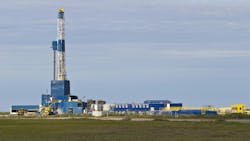EIA: Alaska oil output to grow 13% in 2025
Crude oil production in Alaska is poised to reach its highest level in nearly a decade, driven by strong performance from new North Slope projects, according to the latest forecast from the US Energy Information Administration (EIA).
EIA now expects Alaska to produce 477,000 b/d in 2026, the highest annual average since 2018.
After decades of steady decline, Alaska’s oil output is set for a significant rebound. EIA projects a 13% increase—about 55,000 b/d—in 2026, marking the state’s largest year-over-year growth since the 1980s.
The turnaround is led by two major developments on the North Slope.
ConocoPhillips’ Nuna project, which began producing in December 2024, has shown steady growth. The field produced 7,000 b/d in August 2025 and is expected to reach 20,000 b/d at its peak, helping offset declines in legacy fields.
A larger boost is expected from Pikka Phase 1, jointly owned by Santos and Repsol. The project is scheduled to begin production in first-quarter 2026 and reach peak production of 80,000 b/d by mid-2026, nearly 20% of total Alaska oil production in 2025.
EIA noted that wells from these new projects outperform most existing wells in the state. Recent production records from the Alaska Oil and Gas Conservation Commission show that new wells produce about 480 boe/d, whereas 78% of Alaskan wells produced less than 400 boe/d in 2023.
The agency said its upgraded 2026 outlook reflects Santos’s accelerated ramp-up to peak production for the Pikka Phase 1 project and recent well tests demonstrating high productivity.

